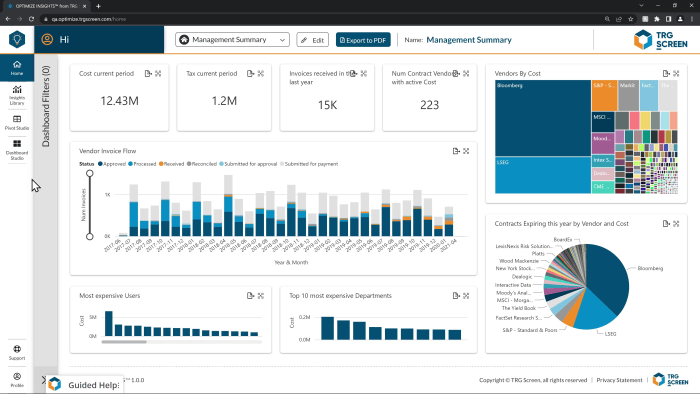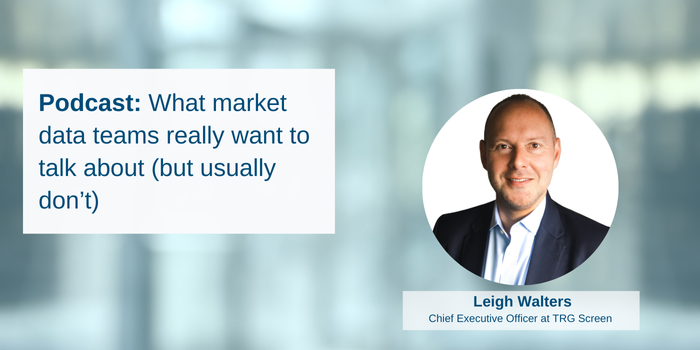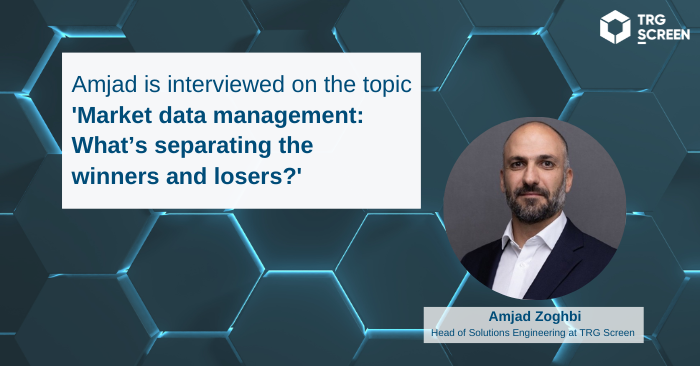While we at TRG Screen talk a lot about the soaring complexity and significance of market data, the numbers speak volumes. Global spend increased by 6.4% in 2024, underscoring its growing value in the financial landscape.
Transforming market data commercial management
A tailored platform designed for seamless management of your entire market data subscriptions lifecycle is imperative. It not only enables proactive spend reduction, increased utilization and compliance management, but also automates entire subscription management workflows.
Yet, it goes beyond the purpose-built software. The real game-changer lies in integrating best practice tools and workflows into the products. Meticulously honed over the years, these capabilities incorporate the methods and techniques from seasoned industry experts to present the effective way to work and produce the optimal output.
Leveraging over two decades of expertise in providing this purpose-built market data subscription management software, TRG Screen's Optimize platform embeds the industry gold standard into every facet of market data commercial management. Through these seamlessly integrated best practices, TRG Screen empowers its 450+ clients globally with efficient workflows, enabling them to right-size subscriptions, optimize expenditure and maximize value — all while ensuring compliant usage.
10 critical areas to streamline market data cost management
Within our Optimize platform, we introduce Optimize Spend, a dedicated solution that zeroes in on the intricacies of contract, inventory and spend management of market data commercial management.
Here at TRG Screen, we divide best practices for onboarding and maintaining Optimize Spend into 10 critical areas, with each one designed to streamline key market data cost management processes. (Also check our runbook with 10 best practices for market data cost management)
Here is a brief overview of each area and why it is of critical importance.
1. Corporate Structure
It is important to maintain a firm’s corporate structure as it evolves so that costs can be allocated accurately, and to maintain the management hierarchy for order management and invoice approval processes.
Best practice is for this to be uploaded and reconciled routinely, with as much automation as possible.
2. Human Resources
Keeping track of employees and their locations is equally important for tracking joiners, leavers and movers.
The recommended practice is to routinely upload, map and reconcile any market data management tracking software directly with the HR file.
3. Finance
Best practice in the finance area encompasses processes across the entire invoice lifecycle, starting from a daily review of expected invoices through to allocation, approval and payment. Optimize Spend allows to automatically create and allocate tasks depending on the stage of the billing cycle.

Reviewing expected invoices helps manage payment and highlights missing ones. Invoices can be
imported from an external system or be manually created. Users should reconcile the invoice against the inventory to ensure the firm is being billed accurately, with purpose-built tools to maximize automation to save time.
Many of the processes can be tailored in different ways according to the firm’s policies. For example, Optimize Spend can automatically approve invoices or they can be sent to as many approvers as required. It will also register when the bill has been paid.
Budget oversight is crucial in finance, benefiting greatly from automation. Maintaining budget records allows for monthly actual inventory cost analysis against the budgeted, offering insights into future expenses.
4. Marketplace / Vendor Management
This captures and tracks where market data comes from, via what vendor and what delivery method. Best practice here is a matter of adding and modifying vendors, agreeing pricing and contracts.
5. Contract Management
Contract management involves storing, monitoring and managing every aspect of the contract lifecycle, including the knotty issue of contract renewals. It is vital that contract expiration is tracked, alerted and reported to identify contracts nearing renewal in good time so that the business can make an informed decision on whether to let it roll to cancel.
Other tasks in this area include adjusting contract pricing in anticipation of a future rise planned by a vendor.

6. Inventory
Maintaining inventory requires regular review to determine whether a service is being used and what is needed moving forward. Optimize Spend has a Spares/Leavers tool to determine whether licenses can be reassigned or if they need to be cancelled. Best practice is to run this check daily.
Spares refer to licenses and other entitlements that are not currently allocated. You can take action – freeing up spare seats, reallocating them and reviewing any seats that are underutilized – right within this tool, saving you time from opening up multiple screens.
7. Certification and Surveys
This functionality allows managers to create surveys of all users on whether they use and need their entitled inventory. A survey could be useful before a decision whether to renew a contract and/or free up valuable seats or reallocate them.
8. Order Management
Order management is about streamlining the order process from raising new orders to fulfilment. This completely streamlines new orders for market data and information services, and automatically routes them through an auditable approval chain that is checked monthly (as defined under best practice 1 above).
9. Batch Processing and Month Closing
Auto-batch processing allows a large amount of data to be processed together rather than in real time to calculate the necessary user and cost data for intra and end of month processing. It is vital to embed quality control measures to ensure that processing errors have been detected, alerted and rectified. Optimize Spend incorporates these processes and workflows as standard.
10. Management Reporting
This focuses on generating crucial reports to extract valuable management insights. In Optimize Spend, the Service Entitlements for Last Period reports on inventory allocations, serving as a crucial tool for understanding monthly spend, tracking inventory and informing budgeting.
Best practices dictate running the General Ledger report weekly and at month-end to detect variances between invoice amounts and run rates. This practice ensures transparency and highlights any discrepancies.
Optimize Insights, within Optimize Spend, serves as a BI-powered reporting and analytics hub, offering unparalleled clarity into a firm's data landscape. It unveils previously undiscovered insights and actionable items in the Insight Library — a repository of customizable visualizations and dashboards.

All in one place
What's remarkable about embedding best practices is that it's not an expensive add-on — although some features may require separate licenses. In fact, users have access to a comprehensive range of tools and tips that cover every aspect of market data cost management.
And it is all in one place, in one seamless system.
Whether you're grappling with the fundamental principles or fine-tuning your strategy for that extra edge, TRG Screen provides the guidance you need.
Partnering with us means gaining access to a dedicated Client Success team that will help you leverage these best practices to optimize your market data cost management. Our implementation and onboarding experts can structure your data for the best possible outcomes, and utilize our best practice documentation to create your own tailored Runbook for optimal market data commercial management.
No internal resources available to maintain a system yourself? Or you want to free up skilled resources to drive greater value? We got you! The TRG Screen Managed Service team are the pioneers and gatekeepers of our well-honed best practices, find out how they can help you to take market data management to a completely new level.
Want to learn more on how to implement best practices into your market data cost management?






